
Prospecting for link building allows a marketer to delve deeper into the online community they are aiming to reach. On a daily basis, link builders can come across hundreds of relevant sites, absorb new industry-related content, and interact with a multitude of experiences.
Adjusting your thought process to focus on content ideas in conjunction with link building efforts can be a strategy for compelling content ideation – not only for link building purposes, but for your overall marketing strategy.
Content ideation crafted while prospecting for link building doesn’t only have to be for link building, it can also be used for social media campaigns or content strategy initiatives – just to name a few. Essentially, link builders can expand on their current strategy by using insights they are gathering while building links.
They say two heads are better than one – nevertheless, this content exercise can be conducted as a one-person operation or as a small team. So, suit up and gather your posse – we’re going content brainstorming!
For this example, let’s take Deneen Pottery (not an iPullRank client), which is a fairly small handmade pottery company based in Minnesota. Naturally, if I was creating a link building strategy for this company, I would start with a thorough inspection of the site, its content and social presence; I would also take a dive into the quantitative aspect of their site, including analyzing their backlink profile. The goal is to immerse yourself in what the site has to offer and try to get a very general feel of who would care about it.
Step 1: Manual Site Inspection
The goal of inspecting the site is to get a better understanding of types of groups that would be interested in this content – for the sake of building links. A few questions you’d want to ask yourself:
- Who would find this content most useful?
- What is the purpose of the content I’m building links to?
- What groups of people would most likely use this content?
- Are there any potential groups that are not targeted based on their current strategy?
We want to establish groups that would be interested in the site we’d be link building for through this site inspection. Next, we will organize our thoughts by crafting a map.
Step 2: Craft a Map for Outreach Ideation
This an organized method for placing potential groups and/or subgroups that would most likely be interested in your outreach efforts. This is great for pairing up content to outreach templates and prospecting subject areas.

Based on your insights from the site inspection, your map may not be very extensive, like the example above. Ideally, you’ll have more perspective from prospecting.
Tip: Draw out your map on a whiteboard if you are working with a team, so everyone can build off the same foundation.
Tour map should not remain static and should change over the course of your campaign. Ideally, it should become more extensive as you learn more about your prospecting opportunities. You may add additional subgroups as you learn more about your link building efforts or change an affinity topic all together. It is meant as a building block for your outreach efforts.
2.1 Link Building to Extend Your Ideation Map
Start your initial search with basic search operators like the one below:
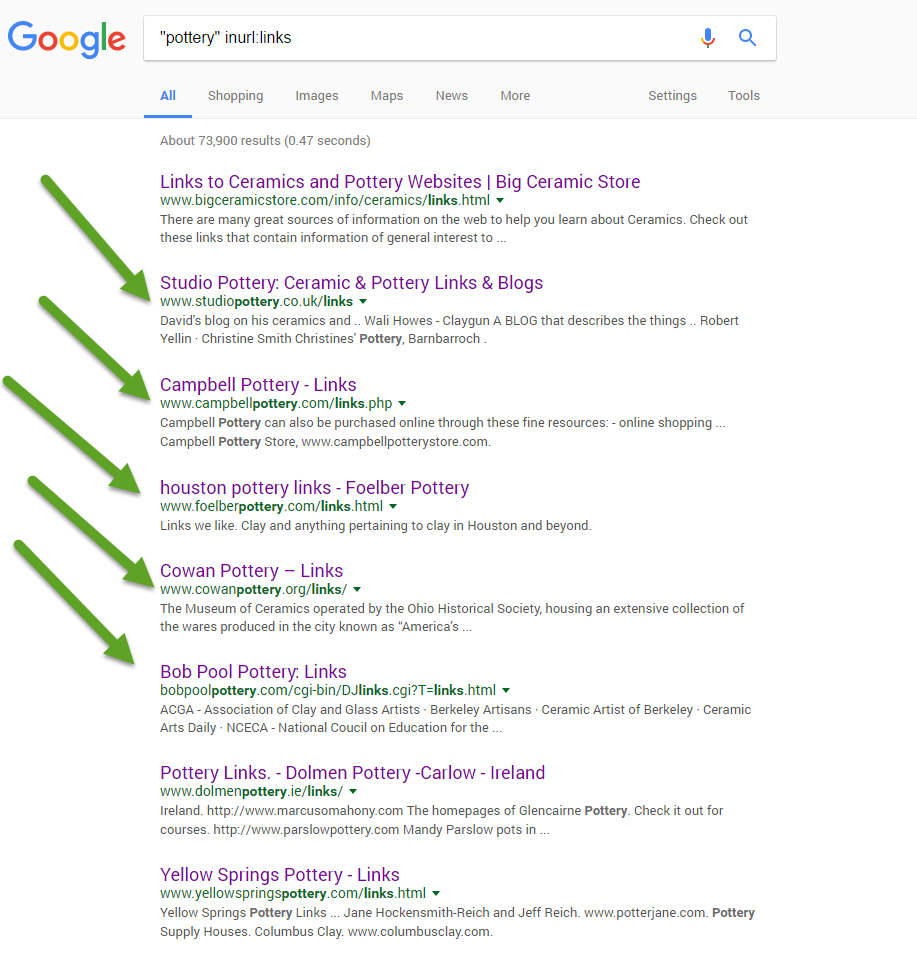
There are a decent amount of link building opportunities from the search above, but we will have to take a look through these sites to see if our pottery site would be a good fit. Allocate time specifically for “prospecting” in order to gain insights on what groups you can extend your ideation map with. It is important to take note of keywords mentioned repeatedly throughout the website, common subject matter and patterns that you are recognizing through your prospecting efforts.
I would also recommend using your intuition for one or two affinities, or perhaps placing an affinity in your ideation map that may not have been a subject matter you found but you feel could be of benefit to that particular audience. This is a brainstorming exercise and it doesn’t need to be exact – use your imagination but keep it educated.
2.2 Affinities
Below are the groups that I created for Deneen Pottery, I have also included sites that inspired these groups.
2.2.1 Arts & Crafts
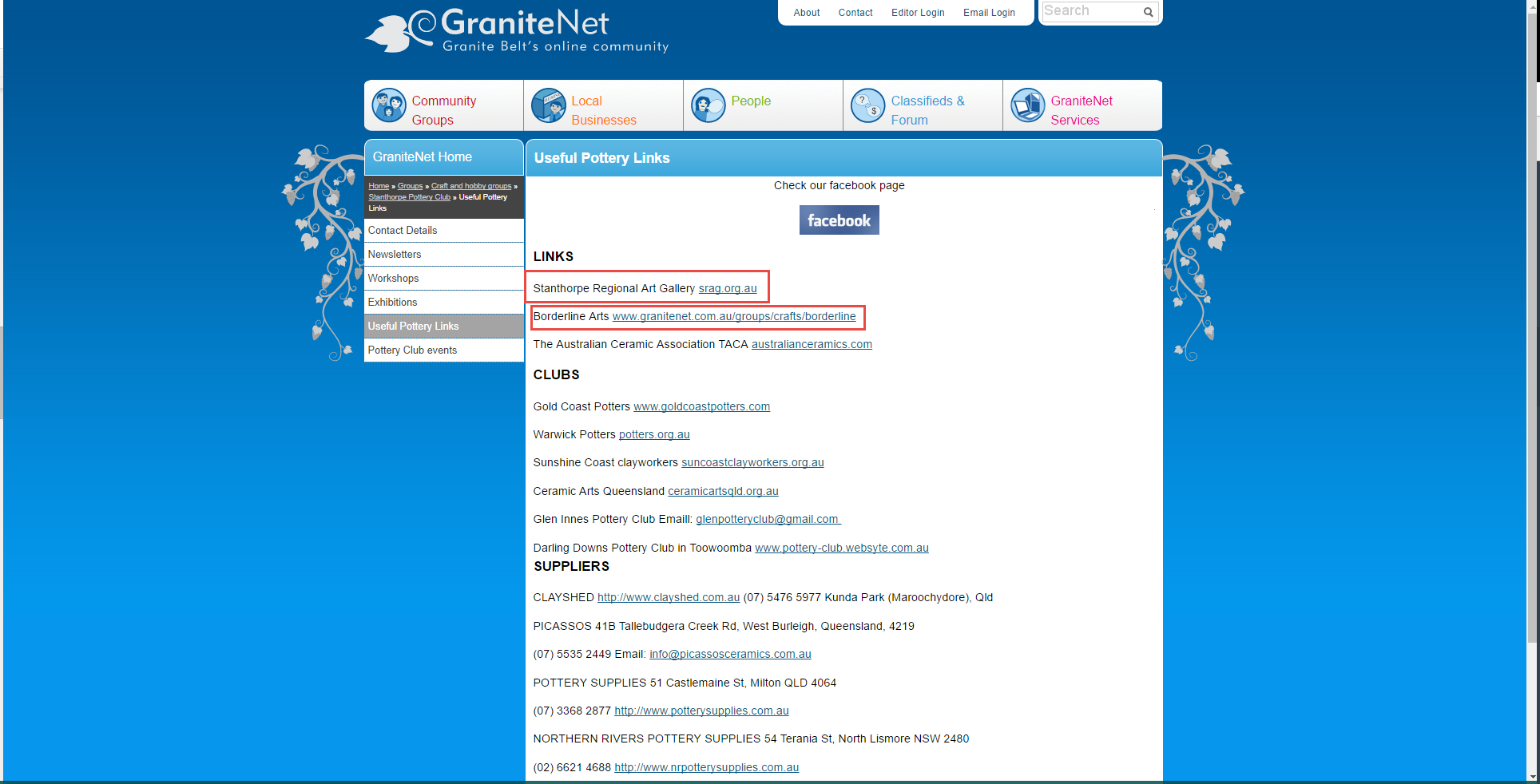
Naturally, pottery and the arts are connected. Art Galleries also seemed to have an interest in handmade works, including handmade pottery content or additional information about exhibitions that are hosting. I encountered many sections on sites for links to other potters and ceramic resources. The community aspect associated with the online pottery community is definitely something to take into consideration.
2.2.2 Potter’s Community

I encountered many sections on sites for links to other potters and ceramic resources. The community aspect associated with the online pottery community is definitely something to take into consideration.
2.2.3 Galleries/Museums

While prospecting, I found many sites linking to local art galleries and museums.
2.2.4 Handmade Goods
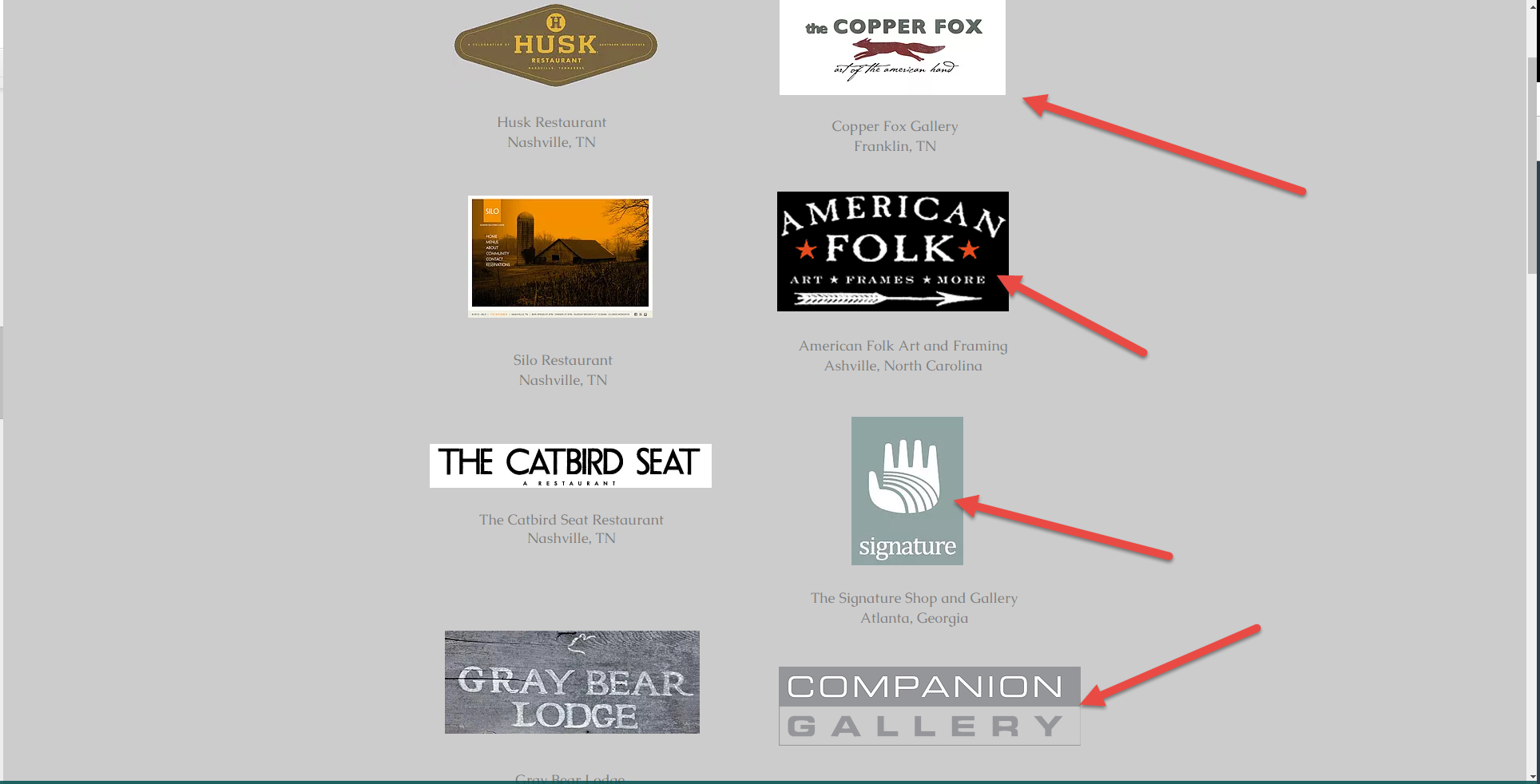
I identified multiple sites that also link to sites that sell or create other handmade goods such as frames and art.
Step 3: Extend Your Map
If you are conducting this exercise with a team, schedule a meeting to extend your map together. Before the meeting, have each team member create their own map with examples as shown in step two. During the meeting, take note of the affinities that are similar, but discuss the one’s that are different – this is where you could come up with the most innovative ideas.
Tip: Hold on to those link building prospects! They could come in handy later.

“Interior Design” and “Local” are two sections I didn’t have examples for – these ideas simply came from intuition.
Ideally, as you prospect within each affinity, you learn more about the opportunities within each group. We will want to extend these groups into subgroups in order to have a more comprehensive approach to brainstorming.
At this point, we would either start to craft a list of prospective sites we would reach out to or craft personalized outreach templates based on groups we’ve brainstormed, but for the sake of this exercise, we will shift gears and start prospecting for the sake of content ideation.
Step 4: Add Subgroups to Ideation Map
The goal is to have a comprehensive approach to your outreach, which is why we’d want to extend our ideation map. I’ll move forward with the “Pottery” or “Potter’s Community” group and use a simple search to get started:
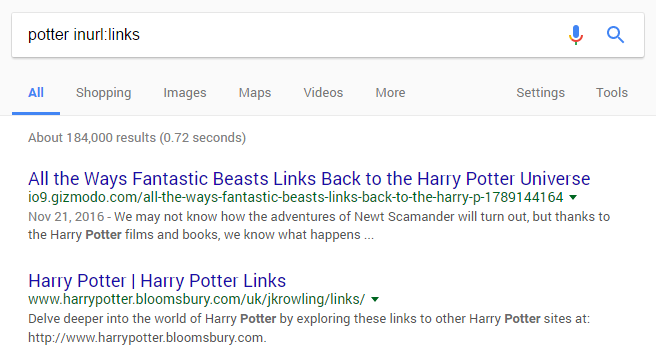
The search query above is a product of “potter” inurl:links”, which gave search results that included Harry Potter related websites. Although, I’d love to read more about how Fantastic Beasts Links back to the Harry Potter series, it is simply not relevant in this case. In result, I’ll craft my search to exclude the term “Harry”.

This example below is one of the many sites I found from this search. By taking a look at some of the keywords and content they are linking to, it is already sparking ideas for possible content initiatives.
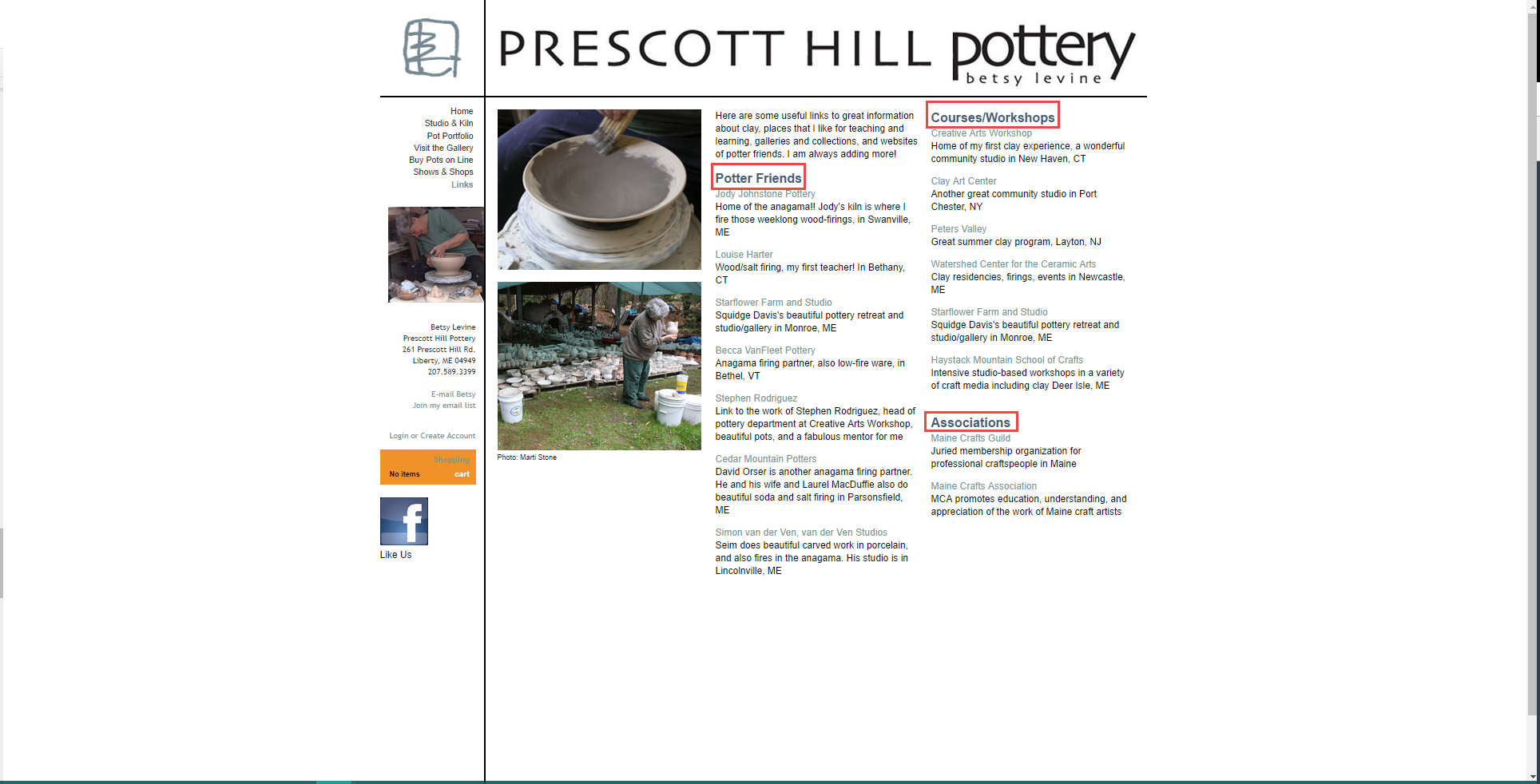
I’ve seen these keywords on a few of the sites I’ve found using the search mentioned. So, I’m starting to get an understanding of what types of content these sites are linking to. I’ve seen associations many times on the sites I’ve looked up, so I’m going to search for “potter association”, I found https://aapa.info/. I’m going to take a look through their backlink profile to get a few ideas.
I’ve established a few keywords that I could use to start my prospecting search. Organization is effective for optimizing link building prospecting, so be sure to drop your keyword into an excel workbook.
After doing this for all of the groups, I’ve extended the ideation map.

Step 5: Content Ideation
Using your ideation map as an outline, start your content brainstorming. It may be valuable to wait until every team member has crafted a few ideas based on each group before meeting for a second round up.
Deneen Pottery Content Ideas Per Group:
Arts & Crafts Cognitive Benefits to Children’s Pottery and Art Initiatives DIY Guide to Safe Pottery for Kids Identifying Safe Materials for Pottery | Galleries & Museums Best Art Exhibits in Utah Newbie Checklist for Museum Hopping in Utah Community Initiative Mug – Local Parks A Local’s Guide to Museums in Utah | Interior Design Editorial Series on Handmade Pottery in Interior Designs Collaboration Series with Interior Designs and Potters |
| Local Landing Page on the Journey of the Finished Pot – From the Ingredients to the Shipment Deneen’s Handmade Mugs in the Community Series LifeCycle of the Mug – Mugged in America | Potter’s Community Monthly Mug Box with Complimentary Items #MugoftheMonth User Generated Content Board Personalize Your Mug Interactive |
Step 6: Vet Your Content Ideas
After you have crafted a few ideas for each group, you’ll want to research topics and see if similar content is already live. If there is and you still want to create it, it should be 10 times better than that content.
Personalize Your Mug Interactive would be a useful addition to Deneen’s Pottery content strategy, so I am going to do some research to see what similar content is available.
There are many ‘design your mug’ interactives online, similar to the one GC CustomizedGirl has. It is important to analyze this piece of content on a quantitative and qualitative level.
Quantitative:
- Determine the number of shares on all popular social platforms
- Determine number of links by using Ahrefs or Majestic
- Determine Domain Authority and Page Authority
Qualitative:
- Evaluate the User Friendliness of the content
- Evaluate if the content is thin
- Identify key attributes of the content
And, of course, ask yourself and your team, “how can we make this content the best on the web?”
6.1 Bring your List to a Collaborative Team Meeting
Bring your final list of content ideas to a final collaborative team meeting, where the goal would be to establish the content ideas you’d want to pursue. Then, determine which content makes the most sense for the overall marketing strategy.
Step 7: Establish Your Pre-Launch Outreach Plan
Now that you and/or your team has established which content activations will be placed in the pipeline, you can transition from brainstorming to putting your ideas to work. Link builders should gather their findings and establish an outreach plan of attack for pre-launch content promotions efforts. To start your plan, beginning by crafting some of these items as you see fit:
- Outreach calendar – allows you to manage your campaign up to the day of your launch
- Template(s)/Pitch – this will differ depending on your approach
- Tatic(s) – laying out your plan will keep you organized
- Prospect list(s) – websites/publications/blogs
Life Cycle of the Mug – Mugged in America, as mentioned in the content ideation list, would visualize how a mug is created with a strong emphasis on Deneen Pottery’s initiative toward producing American-made products. Key tactics for pre-launch initiatives could focus on a) pitching this piece to business publications and b) working with influencers (based on groups from the ideation map) to contribute via commentary and suggestions. Assets would make outreach more successful, so including dates for images/graphics and copy to be completed is crucial.
There are many ways to map out your plan; digital calendars are effective because they are easily shared and visual. The example below was created through Google Calendar.
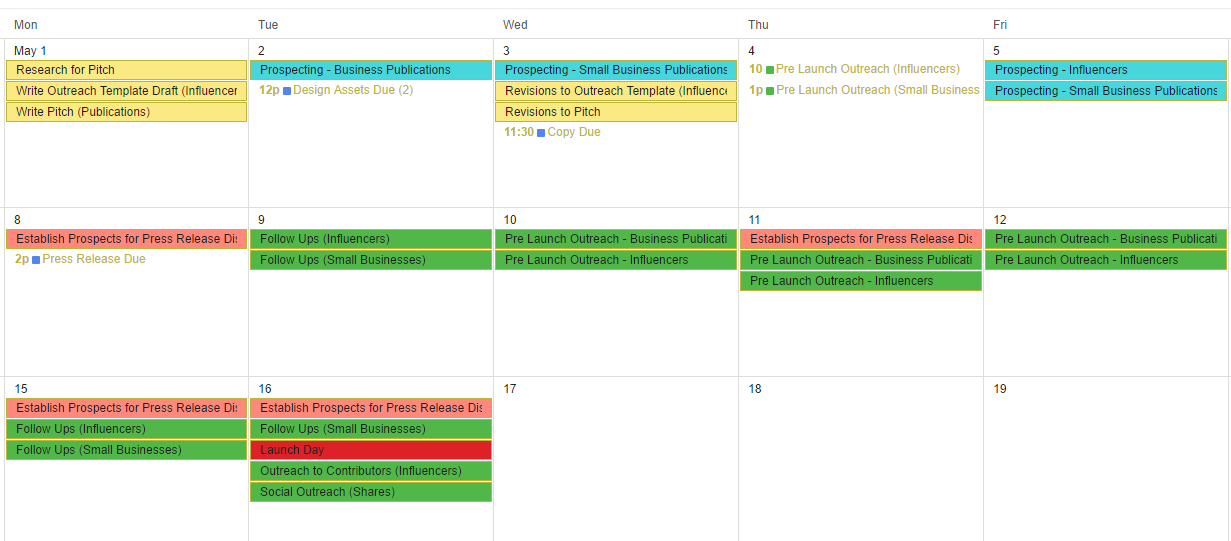
All in All
In short, this blog provided steps for taking link building expertise and applying it to creating great content. Utilizing skills developed while link building and performing outreach can create substantial opportunity for new content and campaigns ideas. It can establish new circumstances for outreach marketers to build links and promote content as well. More importantly, it can serve as an impactful way to bring teams together for collaboration and brainstorming.
- A Content Exercise: Using Link Building Prospecting for Content Brainstorming - March 9, 2017
- Why Your Link Building Gets Rejected & How to Fix It - November 30, 2016
- Don’t Call Us Marketers: How MozCon Defined the New Normal of Digital Marketing - September 23, 2016





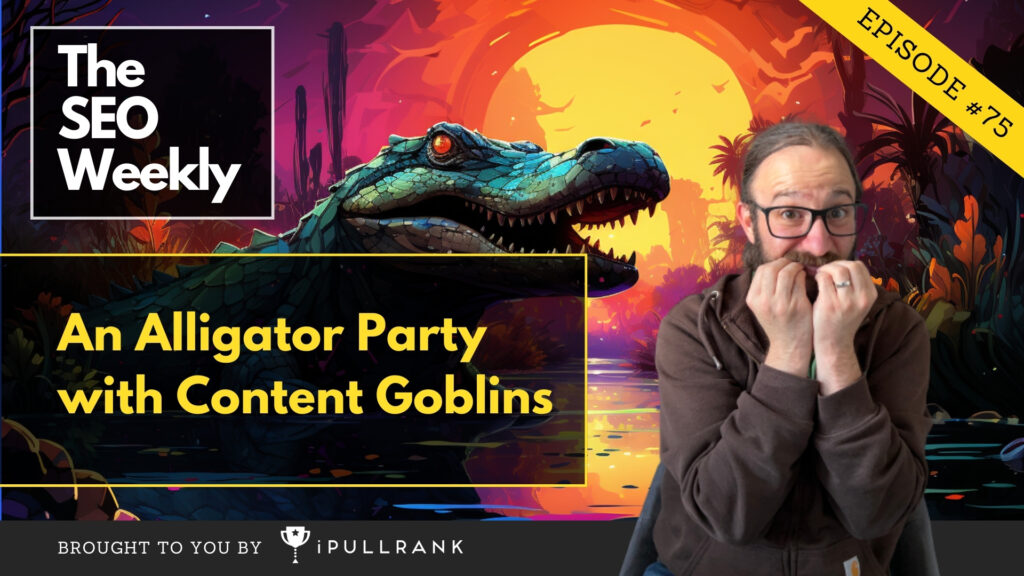
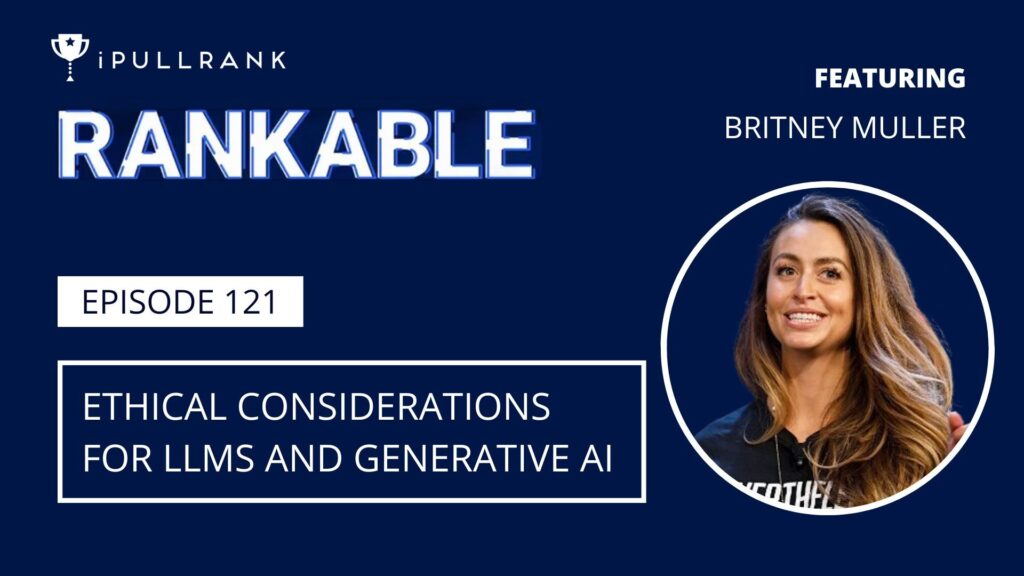




Leave a Comment